
Joseph Lappie
One of the most accessible and immediate forms of art is the art book. It is easily transferred and stored, but more importantly it gives the artist space to explore a theme or concept or image. In an art book the artists vision becomes a more fluent narrative then on canvas. Don't get me wrong, artist can tell stories on canvas, but when challenged with the legacy and structure of a book the story may be vastly different.
Chicago's Joseph Lappie is a product of Colombia's unique Interdisciplinary Book & Paper Arts program, and a fine artist in any format. Yet, his love of books and his training in binding and publishing has brought forth a collection of art books that is diverse and extremely inventive. These books are the ultimate form of mixed media, and each tells its own story. They are a connector between art and literature and should valued on both levels equally. Joseph recently won the Grand Prize at the 2008 Seoul International Book Arts Fair with his book The Articifer Arisen, The Articifer Fallen, and just won Best-In-Show at the Weisman Award Exhibition here in Chicago.
One of the most accessible and immediate forms of art is the art book. It is easily transferred and stored, but more importantly it gives the artist space to explore a theme or concept or image. In an art book the artists vision becomes a more fluent narrative then on canvas. Don't get me wrong, artist can tell stories on canvas, but when challenged with the legacy and structure of a book the story may be vastly different.
Chicago's Joseph Lappie is a product of Colombia's unique Interdisciplinary Book & Paper Arts program, and a fine artist in any format. Yet, his love of books and his training in binding and publishing has brought forth a collection of art books that is diverse and extremely inventive. These books are the ultimate form of mixed media, and each tells its own story. They are a connector between art and literature and should valued on both levels equally. Joseph recently won the Grand Prize at the 2008 Seoul International Book Arts Fair with his book The Articifer Arisen, The Articifer Fallen, and just won Best-In-Show at the Weisman Award Exhibition here in Chicago.
Recently, Joseph was kind enough to answer a few of my questions.

Orange Alert (OA): How did you first become interested in art books?
Joseph Lappie (JL): My first solid introduction of using the book format as art came in 1999 or 2000. I noticed printmakers at my undergraduate university making small editions of prints and collecting them in a concertina or pamphlet. It always seemed like an effective way to create a narrative and an easy way to display and distribute one’s work. After I graduated I moved out to Portland, Oregon and got a job at Powell’s bookstore. There I was introduced to more examples of livre d'artiste’s, zines, inventive small press publishing's, and artist’s books. At the time I didn’t have a studio so I began experimenting with things I could do in my apartment: binding, small prints, digital work. It was just a tiny step before I connected them all together. Before I knew it I had created what I would consider to be my first, and worst, artist’s book. I made an edition of 25 in a horrible little binding and managed to sell all of them in a month. It helped that they sold for dirt cheap. Anyway, I continued to study binding on my own and began making small books of etchings. I hesitate to call them artist’s books because there is no narrative, page flow or connectivity in the prints other then technique, but they were certainly prints in a book. It allowed me to express myself artistically in a new format. To make my work accessible in a more democratic medium. Somewhere along the line I realized that I wanted to expand my ability by learning letterpress and papermaking and advanced binding. I decided the best way for me to do that was to continue on towards graduate school.
OA: Why books as opposed to a more traditional mixed media format?
JL: Artist’s Books are a traditional mixed media. They’ve been around for arguably hundreds of years and use a wide array of interdisciplinary mediums: binding, printmaking, papermaking, text, drawing, painting, sculptural elements and more recently video, audio and installation. They are an amalgamation of art practice. I think they possess a still untapped potential. Here is an art form that is so personal, so intimate that often only one viewer can experience it at a time. It demands your active engagement. This is something traditional art, painting or sculpture, doesn’t necessarily offer. They often present a more passive interaction of just one sense, sight. This isn’t meant as a criticism just a difference. Artist’s books intertwine text and image and narrative in a way that makes you spend time with it to understand it fully. It engages sight and touch and occasionally sound, smell and even taste. (There is a yearly international Edible Books exhibit) I think of it as a time-based art. You as the viewer are responsible for how you read or look at the book, when you turn the pages, and the digestion of the information. You hold it. It’s tactile and has heft and presence. If it is a multiple then there is a democratic appeal to an artist’s book. It allows for the piece to be more affordable and therefore more accessible to the public. A book is something everyone can understand. The content within may be a different story, but the mode in which one delivers the content is unpretentious and familiar.
There is also this interest in the continuation, building up and defining of an art genre. I believe that Artist’s Books have so much to offer viewers if they can accept them as a legitimate art-form. Unfortunately I think that Artist’s Books are still often relegated to the Craft world. There are actually a lot of artists who make artist’s books, but they are often only seen in special collections of libraries, at Artist’s Book fairs and exhibitions or in the hands of a few private collectors. The books that do make it to larger exhibitions spaces are often called sculptural works or book-like objects. An artistic life goal of mine is to see artist’s books become more visually present in institutions and to have their “artistic worth” be parallel to paintings and sculptures and photographs. One way of doing this is to get them out of the vitrines. Showing a book in a vitrine, where a viewer cannot touch the book nor can they read or view any page other then the one a curator has decided upon is like looking at a painting that is predominantly covered by a large black cloth. How are we supposed to appreciate this type of work when we cannot interact with it in the way it was meant to be. It diminishes the form. Another way to develop the legitimacy of an artist’s book is, as an artist, to present one’s bookwork alongside one’s 2d or 3d work. To make them connect in content and concept and to always call it what it is.
OA: Most the books are created in a limited run of 15 to 25. Have you thought about getting them published or distributed on a larger scale?
JL: It is certainly an idea that I entertain. I should point out that two of my books, How To Be A Man In Five Easy Steps and God’s Country were made in slightly larger editions of 125-150. In regards to republishing works that I have already created I would not want to sacrifice the integrity of an existing piece, particularly one that is letter-pressed or hand-printed just so it can be present in a mainstream environment. If I want to have a high print run and a greater distribution, assuming a publishing house would be interested, I would have created the book for that market, made it so that every aspect of this particular piece of art was meant to be seen in that style of printed reproduction, playing to the benefits of the technique and medium. I would be doing a disservice to myself and to the viewer otherwise. They all have their positive and negative aspects: one-of-a-kinds, small edition hand-made work, and large scale or mass-produced books.

OA: What do you think would be lost if say Five Thoughts on Sincerity was printed by a major publishing house?
JL: I think several aesthetic elements would be lost from that book. First you would lose the texture created through the act of letterpress, The type would be sitting on the paper as opposed to slightly indented into the paper. Secondly, the woodblock printing would lose some of its quality because it would most likely be on a paper that doesn’t accentuate the medium. It would lose its handmade quality. I feel secure in my craft and my ability to bind a solid book, but there is always something, something spot on or slightly off (typically only to me). The little inconsistencies always beat machine-perfection. Always. Finally and at the risk of sounding fetishistic, I think a lot of people appreciate holding a well-made object that was printed and bound by hand. It provides another avenue of connection and adds personal value to the piece. There’s the issue of paper quality, how the pop-ups are made and the loss of the smell of ink. These all may seem minor as a viewer, but the fact that the book was designed with these elements in consideration makes them major to me.
OA: You recently won the Seoul International Book Fair with The Articifer Arisen, The Articifer Fallen. What that experience like?
JL: Winning that award was a slightly surreal experience. I sent it to the fair without any expectations and, due to translation issues, wasn't really sure when it was being judged or against what (or even for sure IF). Then I started receiving congratulations from a few Korean friends. I had heard nothing but second and third hand information about what was happening and vague (occasionally unbelievable) whisperings of what I won in the process. Not being able to speak or read Korean I could not find any physical or online information (in English) confirming the award. It took several weeks to get an email from the coordinator finally confirming it. I briefly thought it was a mistake. It wasn't though. The award money also created a small amount of confusion. It was presented as 2,000,000 Won (Korean currency). I knew there was an extreme conversion rate, but in my fanciful dreams I had just made my salary for the year. It wasn’t quite THAT much, more like a months rent and bills than a years salary. I was excited although there was a wait to receive the prize money and with the depreciating dollar I was getting worried as the sum slowly decreased. They also gave me a trophy that blows any trophy I have ever received out of the water. It’s a real honor to know that something I worked so hard on was so widely appreciated in Seoul. It makes me feel I am doing the right thing. Winning this award had blossomed into a relationship with an organization called Artist Book Seoul who has been showcasing my work in S. Korea and recently in Frankfurt, Germany. Their interest encourages me to further develop an international base for my books.
OA: Did you travel over there for the book fair?
JL: No, I didn’t get the opportunity to go. I would love to travel to Seoul one day but as most things do it all comes down to cost unfortunately, not desire.

OA: How to Be a Man in Five Easy Steps looks like a lot of fun, have you received any feed back on that release?
JL: I received a lot of great feedback from the book. It is meant to be firmly tongue in cheek and I somehow managed to succeed in doing that. I don't see it as controversial because it isn't taking itself seriously and, to my knowledge, no one has seen it as anything other than what it is, goofy and irreverent, just like many gender stereotypes. Actually I'm re-editioning the book and turning it into a, long time coming, series. It's sequels will be How To Fight Like A Man in Five Easy Steps, How To Make Love Like A Man in Five Easy Steps, How To Die Like A Man in Five Easy Steps and How to Come Back as A Man in Five Easy Steps.
OA: How did that book come about, and why superheroes?
JL: The physicality of the book came because I wanted to learn how to work an old AB Dick offset machine. They're these little crappy offset printers that give you horrible registration in a hard to intentionally mimic way. I love it for its quirks. I was also experimenting with simple and quick binding techniques. I wanted to make an interesting one-pager (a book that consists of only one sheet of paper, cut and folded to create 8 pages) The content came from the desire create something lighthearted that mocks male gender roles and our cultural push to be all-man. I think it is a serious issue in the world, but felt like tackling it seriously may come across as too proselytizing. This is a large part of why I chose to work with superheroes. All of the heroes I manipulate in the book are obsolete public domain characters (although some are recently experiencing a resurgence in nostalegic popularity.) I love comic books and particularly that era, all golden age 40's characters. We see an archetype thrown out, some snazzy spandex thrown on, a (mainly) male character beating the living crap out of or more often killing their enemies (no talking or emoting or sympathizing) and then returning to their beautiful, unsuspecting and often victimized girlfriend, their self-created millionaire lifestyles and their scientifically unexplainable origins. Can I find more material for my premise of being a MAN? Maybe, but not easily. Besides it was a safe bet since these characters, and their color schemes, were designed to be printed four-color offset. I should note that the sequels will contain imagery from other sources such as karate manuals and 70's sex technique books. I'm looking for the epitome of "manliness" and that's where I seem to find them.
OA: What was your experience at Columbia like?
JL: I was very lucky to go through the program when I did. I received my Masters In Interdisciplinary Book & Paper Arts and did so during a time of general change and upheaval. Regardless of where the future of the program leads or where it sat in the past, my tenure there was filled with an amazing amount of push, connections, growth, frustrations, realizations, and understandings. The facilities are one of the best, if not the best, in an academic environment in the nation and I was able to work with professors and professionals who not only knew the techniques (papermaking, binding, printing, etc...) but could utilize those skills into creating thought-provoking and engaging art works. I came to Columbia to expand my medium base. I came to think in a more mature way, to acknowledge the importance of craft in relation to the importance of concept and context. My instructors and peers were vital in this. My fellow classmates and I (for the 3 years we were together) were a devoted bunch of artists who were not afraid to fight for what we wanted. As a group we demanded a lot from the Program (and the school) and rewarded them with exceptional work and activities. We created an organization (Pulp, Ink & Thread) that allowed for a safe forum to address student concerns in a unified manner; we reached out to other Graduate programs in order to begin creating a national web of "book & paper" artists who can interact with each other post-schooling; we involved the community in our studies through workshops and demonstrations; we continue to work to legitimize a field that is often relegated to fairs and "Book Arts" shows, big C craft talk and is often treated as a "lesser than" art genre. I am proud to be part of a graduating class of forward thinking individuals who want to make better art in a better environment. That being said Colleges and Universities are businesses and even when best intentions are involved they don't always involve the current students. It can be a hard realization. There is bureaucracy and a lot of quiet dealings that as a graduate student I became acutely aware of. I think change can initially lead to a sense of distrust and unhappiness and there was certainly some of that present. The good news is that change (hopefully) leads to a better environment and greater learning. It's kind of like politics. No one is every completely happy, you just have to weigh the benefits and during my tenure at Columbia I was greatly benefited. (Except for the student loans.)
OA: What was one thing you were able to take away from your time there?
JL: An amazing eyeball for Points and Picas.
OA: What's next for Joseph Lappie?
JL: Right now I have more pies than fingers to put them in, but that’s how I work. The big looming event is a solo exhibition entitled "Before There Was Us and Them There Was We." at the Believe Inn on November 22nd. It’s going to be a show predominantly of large drawings, medium prints and small paintings, but I am trying to squeeze a book or two in. It is a themed show of (hopefully) all new work so I don't want to push anything that doesn't fit. I have some books returning from Frankfurt, Germany and Marseille, France. New York poet Steven Karl and I are working on a book of poems and illustrations that interact visually and contextually with each other. We hope to have it finished up and printed by early 2009. Hobart Literary Journal has kindly asked me to work on a series of themed Broadsides tentatively set to start seeing the light of day come spring. The collaborative press, Chimera Press, co-founded by fellow artist Brandon Graham and myself is working hard on getting an Artist's Book that pictorially investigates corruption through greed and the corruption of environment back on its feet. Brandon, Stephen Desantis, Kirstin Demer and I are working on the creation of an Artist's Book organization out of Chicago named Artist-Book-Co-Op. We hope to become a presence that informs viewers, collectors and artists of contemporary artist’s books and the artists that create them. Our website is in development and we’ll have a physical presence at art conferences next year. Most importantly to me I have begun working on my new book tentatively titled " The Antediluvian". It's only in the concept phase, but I am ecstatic about making a book to top Articifer. I'll be teaching a Lithography workshop this Spring and will be participating in demos for the 2009 Southern Graphics Conference. Having spent the last three years in an academic setting I am also trying to be more active in the gallery and alternative space scene. I would really like to spend a year or two and just get my work experienced by as many people as possible. I’m still trying to figure out how to successfully network though. All of this plus one full-time and one part-time job, two cats, and a very understanding partner keeps me on my creative toes.

Bonus Questions:
OA: What was the last great book you have read?
JL: Right now I am finishing part One of Joseph Campbell’s Masks of God Series entitled Primitive Mythology. I’ve actually read the series out of order, having read book three and four first. This first volume is great. It postulates not only on why religion (myth) began but also connects disparate cultures through their sacred stories. I find it fascinating to read about an 8000-year-old society’s mystical beliefs and how they are frightenly similar to contemporary religious (and cultural) thought. Some of the ideas are horrifying and yet…similar. The other book I just read was The Crying of Lot 49. It is an early novel of Thomas Pynchon’s and supposedly his most accessible. The basic premise, a woman searching for the truth about an alternate postal service and the conspiracies it evokes, doesn’t seem too exciting at first, but the beautiful and humorous play on language, the creation of a fake Jacobean revenge play and inclusion of something called a Maxwell’s Demon makes it truly fascinating. Reading it got me excited to tackle Gravity’s Rainbow. I know you only asked for one, but I also have to mention the best fiction book I have read in a long while; “The Children’s Hospital” by Chris Adrian. Just go out and buy it. It’s beautiful and horrible and epic and full of awesomeness.
OA: What type of music do you listen to and who are a few of your favorites?
JL: I’m not really good at quantifying types of music, when I do it just sounds pathetic so I’ll just say I am aurally eclectic. My musical favorites change frequently, but currently I have been spending a lot of time with the Cloud Cult, Marnie Stern, the Books, Yo La Tango, Peaches and Regina Spektor. I do have a few time-honored albums that I can listen to at any given point which would logically make them all-time favorites: Menomena’s “I am the Fun Blame Monster”, Radiohead’s “OK Computer” or “Kid A”, They Might Be Giants’ “Flood”, Bob Dylans’s “The Free-Wheelin Bob Dylan” Cat Stevens’ “Greatest Hits”, and DJ Danger Mouse’s “Grey Album”. I love them all. As a side note, I don’t actually listen to music while I make art. I can, but I prefer silence. I think it’s because I’ll sing (or mumble) along and blurting out lyrics seems to increases my “error margin” exponentially. With binding and printing I try to minimize that.
For more information on Joseph Lappie please visit his website.
+by+Nick+Volkert).jpg)
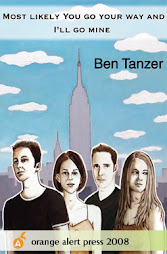

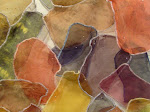









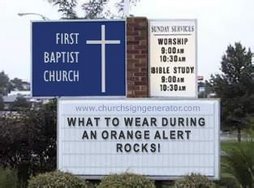


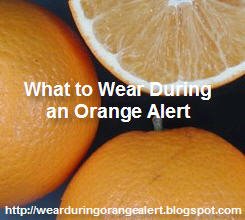


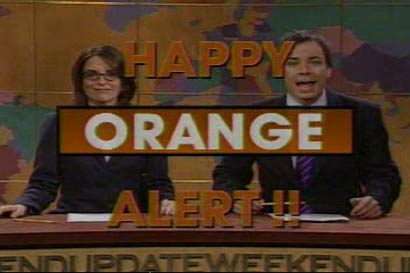


4 comments:
i enjoyed the interview!
i like artists books because they are more intimate. it is a one on one relationship with the work and the viewer and you have to hold it much like the artist did.
r.
I am so impressed by this artists remarks and can personally attest to the remarkable, aesthetic, handmade books, as I have smelled, read and felt them. However, I must admit that I frequently lack the cognitive ability to fully understand and appreciate the words that are printed as I am not intellectually astute in the exceptionally creative art world. I am alittle biased as I am the mother of, how did he put it, his partner.
Joseph Lappie is indeed a force of nature.
There are some very great sources here and thank you for being so kind to post them here.
Post a Comment